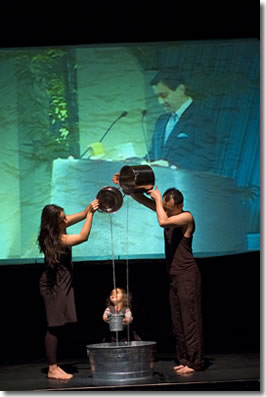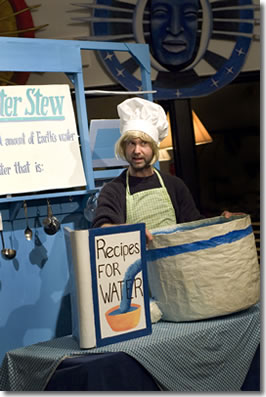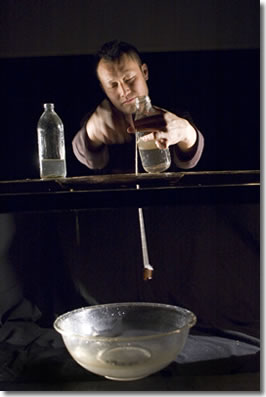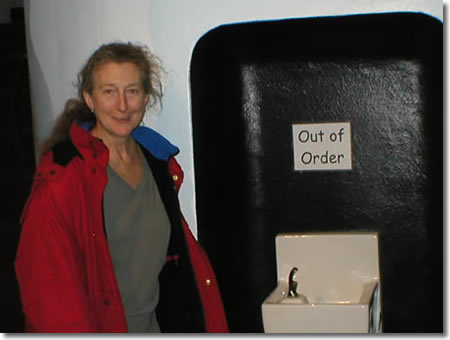Drinking Water Protection
- Drinking Water Protection Home
- About Us
- A-Z Index of Contaminants in Water
- Community Public Water Supply
- Drinking Water Grants and Loans
- Drinking Water Institute
- Drinking Water in Schools and Child Cares
- Drinking Water Revolving Fund
- Laws and Rules
- Noncommunity Public Water Supply
- Source Water Protection
- Water Operator and Certification Training
- Drinking Water Protection Contacts
Related Topics
- Annual Reports
- Drinking Water Risk Communication Toolkit
- Drinking Water Protection External Resources
- Fact Sheets
- Forms
- Invisible Heroes Videos: Minnesota's Drinking Water Providers
- Noncom Notes Newsletter
- Sample Collection Procedures (videos, pictures, written instructions)
- Waterline Newsletter
Related Sites
- 10 States Standards
- Clean Water Fund
- Health Risk Assessment – Guidance Values and Standards for Water
- Minnesota Well Index
- Water and Health
- Wells and Borings
Environmental Health Division
Minneapolis Theater Focuses on Water in Series of Performances
From the Summer 2007 Waterline
Quarterly Newsletter of the Minnesota Department of Health Public Water Supply Unit, Waterline
A complete list of feature stories can be found on the Waterline webpage.
 “I love water—a lot,” says Sandy Spieler, the artistic director of the In the Heart of the Beast Puppet and Mask Theatre (HOBT) in Minneapolis. Many echo her sentiments and realize the importance of water, but few convey it with the sense of spiritual reverence that Spieler displays.
“I love water—a lot,” says Sandy Spieler, the artistic director of the In the Heart of the Beast Puppet and Mask Theatre (HOBT) in Minneapolis. Many echo her sentiments and realize the importance of water, but few convey it with the sense of spiritual reverence that Spieler displays.
After growing up in various places in the eastern United States, Spieler came to the Twin Cities during her college years and was a part of HOBT from nearly the time of its founding in 1973, when it was the Powderhorn Puppet Theatre and operating out of the basement of the Walker Community Church. In 1988, HOBT moved into the nearby Avalon Theatre on Lake Street. The Avalon started as a family-oriented movie house in 1937 but later became a porno theater. When HOBT took over, it marked the transition with a sign on the marquee that said, “Bye Bye Porn, Hello Puppets.”
Even before the move, in the early 1980s, HOBT was focusing on water issues. This was at a time when cities were starting to embrace their water sources after years of turning their backs on them. The theater did a variety of shows, large and small, culminating in a Circle of Water Circus, a grand spectacle show (with 25 adults, 5 children, and 2 dogs) in which they spent four months traveling down the Mississippi River, from Brainerd to New Orleans.
Four years ago, Spieler’s interest in water was regenerated when she went to England for a sabbatical and had her course work revolve around water. She developed a special concern about privatization of water in terms of people using it for economic gain, profiting from it. “I hadn’t thought about ownership issues until that time,” she said. “I always thought that water belongs to no one and yet belongs to everyone.”
To Spieler, connecting the words “water” and “ownership” feels like a “violation deep inside me, even into the cells of my body.”
While in England, she became enamored with the term “the commons.” Beyond its meaning of referring to something of frequent occurrence, the word more often means “belonging equally to all” in England. “That word entered into me,” said Spieler, who carried it with her on her return to the United States, particularly as it related to water. “If water is essential to all of life, then access to healthy water is essential for all life, a ‘commons’ for all to share.”
Spieler’s experiences while abroad created a renewed desire to create an educational base and start a dialogue about water, a process that is more significant for the questions that are asked than in having the right answers. “I wanted to connect people in their own homes, their own drinking water, and their own way that they use water with all the water in the world. Because we use water, we are connected to these issues whether it’s on our doorstep or not. Water has no boundaries.”
Spieler was pondering how to convey the messages on water through an artistic performance when she noticed a familiar site in the back of the lobby of the theater, a drinking fountain with an “Out of Order” sign on it.
 |
 |
|
Photos from the Come to the Well performance (including the one above, at the beginning of the story). Photos from the performances are by Bruce Silcox. The photo of Sandy Spieler below, at the end of the story, is by Stew Thornley. |
|
“We didn’t know why [it didn’t work], just never thought about it in the 19 years we’ve been here,” said Spieler. With the drinking fountain out of commission, the theater had been selling bottled water to its patrons, thus engaging in its own profit of the sale of water. “We had inadvertently stepped into the privatization of water through the sale of water that isn’t connected to a public system, isn’t giving back to a reciprocal relationship.
“Drinking fountains are a symbol of the public water. They are the place where people can gather. And if you know that the water in a fountain is good for you, you know that it’s good for the next person and the next person . . . But if you’re just getting a bottled water, you’re just thinking only of yourself.”
The broken drinking fountain became the inspiration for HOBT to create a series of performances on water called Invigorate the Common Well.
The title contains words with multiple meanings, Spieler explains. “The invigoration is the opening of the questions. It’s getting people to speak to each other. Coming to the well. Common is what we share. The larger sense of the commons. It’s bringing that word to the vernacular, that word which is a founding principle of democracy of the United States. But we’ve forgotten that word; we don’t call things the commons.
“Drinking water is really right at the center of it because everyone understands water from their own thirsts.”
The three performances in Invigorate the Common Well revolve around the renovation of the drinking fountain. “The performances are way bigger than the drinking fountain,” Spieler said, “but the process of doing that gave us opportunity to think about what it is we drink. So the renovation of the fountain is like an emblematic action for a huge opening of awareness.”
The first performance, entitled Come to the Well, took place in March of 2007 with the focus on what happens when the water isn’t working. In explaining the overriding theme in Come to the Well, Spieler cited a line from Ben Franklin in Poor Richard’s Almanac: “When the well’s dry, we know the worth of water.”
Spieler points out that in Minneapolis, as well as most parts of Minnesota, the well isn’t dry, and, as a result, people don’t know the worth of water. “We live in a water privileged city and state. So why should we care? In a water-rich state, how does it matter if we conserve water? At a very basic level, be mindful that you’re using water. Someone pointed out that as soon as pipes were invented, that was the beginning of us not realizing the value of water. Because that which has made it so convenient has also made us take it for granted.”
In Come to the Well, the audience makes a ceremonial entrance into the theater to be seated. They are led through a maze of curtains with words and images related to water. They are handed metal drinking cups and step up to the non-working fountain before going into the theater. At the end of the performance, their cups are filled with water by members of the company.
The next episode, Beneath the Surface, will take place in the spring of 2008. At this point, the wall around the drinking fountain will be open, revealing, Spieler says, “the pipes that connect it into the incredible system that is the Minneapolis Water Works, which of course connects us to the Mississippi River, which of course connects us to the entire Mississippi River basin, or the watershed of the Mississippi River, which connects us to the watershed of the world.”
The series will conclude in the summer of 2008 with Decorate the Well in Gratitude. Spieler says by this time the fountain renovation will be complete “so every time [you drink from it] you’re reminded of your connection to all of life—to all who depend on the precious gift of water—and also reminded of the generosity and necessity of our public water works. Thank you to the water! Thank you to all who take care of our water!”
More information on the series and performances is available by contacting Heart of the Beast Puppet and Mask Theatre at 612-721-2535.
 |
| Sandy Spieler by the drinking fountain that created the idea for the performances on water at the Heart of the Beast Puppet and Mask Theatre. |